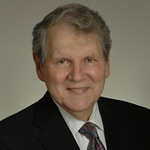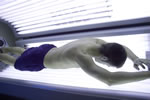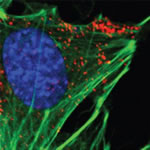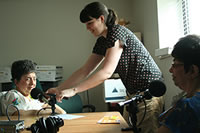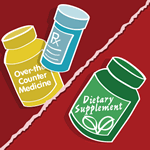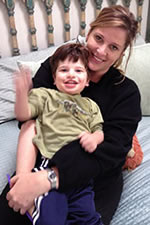Spotlight
Letter from Dr. Stephen I. Katz: Connecting With Our Congressional Colleagues
Although we are living in a time of unprecedented scientific opportunities, the funding climate has become increasingly challenging for researchers. In light of this issue, the National Institutes of Health (NIH) and its individual Institutes have begun considering a range of options to enhance research funding stability and flexibility. The proposals on the table are diverse. Institutes are considering using different funding mechanisms that target investigators at specific career stages. For example, some Institutes are designing programs for early-career stage investigators, while others are focusing their efforts on more senior scientists.
Image: Stephen I. Katz, M.D., Ph.D.
News
Chronic UV Exposure Induces Opioid Response That is Associated With Tanning Addiction
Prolonged ultraviolet (UV) light exposure results in an increase of a substance known as β-endorphin, a chemical produced by the body that reduces sensitivity to pain and is associated with addiction, according to a study conducted in mice and funded in part by the NIAMS. The study was published in the journal Cell.
Image: Excessive UV exposure is a major risk factor for skin cancer.
Newly Discovered Thyroid Hormone Receptor Helps Control Bone Formation
Researchers funded in part by the NIAMS have discovered a form of the thyroid hormone receptor that accounts for some of thyroid hormone’s effects, including its role in bone development and maintenance. A chemical compound that mimics activation of the newly identified receptor promoted bone formation in mice, suggesting a new therapeutic strategy for enhancing bone health. The study was published in the journal Science Signaling.
Image: Thyroid hormone receptor, p30 TRα1 (red), in “hubs” where signaling molecules meet in the cell membrane. Photo credit: Renate Pilz, M.D., UCSD.
Research on Keratins Reveals Unexpected Link Between Hair Disorders and Dental Decay (With Video)
Keratins are proteins that are key structural components of hair, nails and the skin’s outer layer. Now, new research led by Maria Morasso, Ph.D., chief of the Laboratory of Skin Biology at the NIAMS, has shown that certain types of hair keratin also help form dental enamel, the tough outer covering of teeth. The study appeared online October 27, 2014, in the Journal of Clinical Investigation.
Image: Finger-like projections (magenta) into a tooth’s top layer represent damage to the enamel of a person with a keratin 75 mutation. Photo credit: Duverger et al., JCI 2014.
NIH Awards Nearly $31 Million To Enhance Diversity in the Biomedical Research Workforce
The NIH has awarded nearly $31 million in fiscal year 2014 funds to develop new approaches that engage researchers, including those from backgrounds underrepresented in biomedical sciences, and prepare them to thrive in the NIH-funded workforce. These awards are part of a projected five-year program to support more than 50 awardees and partnering institutions in establishing a national consortium to develop, implement and evaluate approaches to encourage individuals to start and stay in biomedical research careers.
Responsive Design for MedlinePlus Mobile
The NIH National Library of Medicine (NLM) has released responsive versions of the MedlinePlus Mobile Sites in English and Spanish. Like the original versions of the Medline Plus mobile sites, the redesigned sites are optimized for mobile phones and tablets. Unlike the original mobile sites that contained only a subset of the information available on MedlinePlus, the new sites have all of the content found on MedlinePlus and MedlinePlus en español. They also have an improved design for easier use on mobile devices.
Defining the Dual Role of Graduate Students and Postdocs Supported by Research Grants
In 2012, the NIH received a number of inquiries asking if certain activities, such as participating in seminars, attending meetings or engaging in other activities designed to expand scientific experience and knowledge or directly prepare postdocs for future employment, could be charged to NIH grants. The confusion seemed to arise in part from the fact that postdocs on research grants are often considered employees of their institution, and White House Office of Management and Budget (OMB) federal-wide cost principles were somewhat ambiguous about the role of students and postdocs on research grants. A new document published by OMB provides frequently asked questions about cost principles related to federal awards [PDF - 184 KB].
New Phase of Cooperation Between NIH and the Bill & Melinda Gates Foundation
The NIH and the Bill & Melinda Gates Foundation have entered into a new phase of cooperation to develop interventions to reduce major global health burdens. The two organizations will launch milestone-driven projects on an agreed set of priorities.
Sharing Our Stories: Voices of the NIH Community
The NIH is launching an exciting project to capture the voices of those connected with our community. We’ve partnered with StoryCorps, a national oral history project, to give patients, their loved ones, researchers, staff and others in our community an opportunity to share their stories. We invite you to volunteer to participate today!
Photo credit: StoryCorps.
NIH Director’s Blog
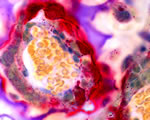 Snapshots of Life: Inside a Bone Remodeling Project
Snapshots of Life: Inside a Bone Remodeling Project
Bones are one of our body’s never-ending remodeling projects. Specialized cells, called osteoclasts, are constantly attaching to old bone and breaking it down, using acids to dissolve the calcium. In the wake of this demolition, bone-building cells, called osteoblasts, move in and deposit new minerals to patch and remodel the bone, maintaining its strength and durability. Paul Odgren, a NIAMS-supported cell biologist, is exploring whether disrupting osteoclasts may open the door to new ways of curbing the bone loss that occurs in osteoporosis, rheumatoid arthritis and periodontal disease.
Image: Osteoclasts (red) go through a knee joint (purple/white) for a blood vessel to supply the cells (yellow) needed to build new bone.
Photo credit: Paul R. Odgren, Univ of MA.
Other Federal News
Mixing Medications and Dietary Supplements Can Endanger Your Health
When you take prescription or over-the-counter medications, do you also take a vitamin, mineral or other dietary supplements? Have you considered whether there is any danger in mixing medications and dietary supplements?
FDA Working to Keep Patients Well Informed
The job of the Food and Drug Administration’s (FDA) Office of Health and Constituent Affairs is to serve our nation’s patients in and its work to advance the development, evaluation and approval of new therapeutic products.
Draft Report on Diagnosis of Gout Available for Public Comment
The Agency for Healthcare Research and Quality’s Effective Health Care Program is seeking comment on the draft report, “Diagnosis of Gout.” It is available for comment until December 2, 2014.
NEW PUBLICATIONS AND PRODUCTS
 NIAMS Patient Experiences: Lupus Patient Video
NIAMS Patient Experiences: Lupus Patient Video
Liliana, who is living with lupus, shares her experiences as a patient at the NIH Clinical Center.
 2015 A Year of Health Planners
2015 A Year of Health Planners
For the third consecutive year as part of the National Multicultural Outreach Initiative(NMOI), the NIAMS has created free multicultural health planners! The 2015 planners provide research-based health tips and information about staying healthy and managing conditions of the bones, joints, muscles and skin. The four health planners, created with community input, are tailored for the following audiences:
- African Americans
- American Indians/Alaska Natives/Native Hawaiians
- Asian Americans/Pacific Islanders
- Hispanics/Latinos (bilingual planner)
The planners will arrive in mid-December 2014, but we are accepting pre-orders. Visit the NIAMS NMOI website for more information.
Videocast Recording of “The National Prevention Strategy: Prioritizing Prevention To Improve the Nation’s Health” Seminar
The Medicine: Mind the Gap lecture series explores issues at the intersection of research, evidence and clinical practice—areas in which conventional wisdom may be contradicted by recent evidence. From the role of advocacy organizations in medical research and policy, to off-label drug use, to the effectiveness of continuing medical education, the seminar series will aim to engage the NIH community in thought-provoking discussions to challenge what we think we know and to think critically about NIH’s role in today’s research environment.
Videolecture: Manipulating the Pain: Chiropractic and Other “Alternative” Treatments for Back Pain
Courtesy of the NIH’s National Center for Complementary and Alternative Medicine (NCCAM), this lecture by Richard A. Deyo, M.D., M.P.H., has been broken into nine chapters and may be viewed by clicking on the links provided, beginning with Historical Perspective on Chiropractic and Acupuncture. It offers 1 CME/CEU credit.
NIH Research Matters
NIH Research Matters is a review of NIH research from the Office of Communications and Public Liaison, Office of the Director, NIH.
Clinical Exome Sequencing Detects Disease-Causing Glitches
For people with suspected rare genetic conditions, getting an accurate diagnosis can be difficult and frustrating. Doctors can find it challenging to match a complicated set of symptoms to the thousands of known genetic conditions. Genetic sequencing is expected to greatly improve the rate of diagnoses for rare conditions in the future. In studies funded in part by the NIAMS, different research teams analyzed the results of whole-exome sequencing in a clinical setting.
NIH News in Health
Read practical health information in NIH News in Health, which is reviewed by the NIH’s medical experts and is based on research conducted either by the NIH’s own scientists or by its grantees at universities and medical schools around the country.
MEETINGS
Vitamin D: Moving Toward Evidence-Based Decision Making in Primary Care
Tuesday, December 2, 2014, from 8 a.m. to 5 p.m., and
Wednesday, December 3, 2014, from 8 a.m. to noon
NIH Campus, Natcher Auditorium (Building 45)
Cost: Free
View Draft Agenda [PDF - 193 KB]
Registration is available here.
Videocast registration is available here.
NIH Pathways to Prevention Workshop: Advancing the Research on Myalgic Encephalomyelitis/Chronic Fatigue Syndrome
Tuesday, December 9, 2014, from 8:30 a.m. to 4:30 p.m., and
Wednesday, December 10, 2014, from 8:30 a.m. 3:45 p.m.
NIH Campus, Natcher Auditorium (Building 45)
Cost: Free
View Draft Agenda
Registration is available here.
Videocast registration is available here.
NIH Wednesday Afternoon Lecture Series
The NIH’s Wednesday Afternoon Lecture Series offers weekly lectures every Wednesday at 3 p.m. in Masur Auditorium, Building 10, NIH Campus. Renowned scientists from around the globe present research on a variety of topics. The lectures are Continuing Medical Education-certified, open to the public and available live via webcast.
NIH Science Lectures and Events Available via Internet
The NIH hosts a number of science seminars and events that are available online through real-time streaming video. You can watch an event at your convenience as an on-demand video or a downloadable podcast. Most events are available to all; a few are broadcast for the NIH or the U.S. Department of Health and Human Services and are marked as such. See additional details on events.
FUNDING ANNOUNCEMENTS
NIAMS Announcements
Research on Eosinophil Associated Disorders (R01)
(PA-15-027)
Letter of Intent Receipt Dates: Not applicable
Application Receipt Dates: Standard dates apply
Research on Eosinophil Associated Disorders (R21)
(PA-15-028)
Letter of Intent Receipt Dates: Not applicable
Application Receipt Dates: Standard dates apply
NIH Common Fund Initiative Announcement
NIH Director’s Early Independence Awards (DP5)
(RFA-RM-14-004)
Letter of Intent Receipt Date: December 30, 2014
Application Receipt Date: January 30, 2015
Other Funding Announcements
Building Interdisciplinary Research Careers in Women’s Health (K12)
(RFA-OD-15-001)
Letter of Intent Receipt Date: December 5, 2014
Application Receipt Date: January 5, 2015
Clinical Studies of Safety and Effectiveness of Orphan Products Research Project Grant (R01)
(RFA-FD-15-001)
Letter of Intent Receipt Dates: Not applicable
Application Receipt Dates: February 4, 2015; February 3, 2016; February 1, 2017; February 7, 2018
Limited Competition: Research Training for Career Development of Junior Faculty in Medical Education Partnership Initiative (MEPI) Institutions (D43)
(RFA-TW-14-003)
Letter of Intent Receipt Date: November 17, 2014
Application Receipt Date: December 17, 2014
NIH Operates Under a Continuing Resolution
(NOT-OD-15-001)
Webinars on What You Need To Know About NIH Application Submission and Review
(NOT-OD-15-002)
NIH Offers Niche Assessment Program to SBIR and STTR Phase I Awardees
(NOT-OD-15-003)
Reminder Notice Regarding Requirements of the Bayh-Dole Act and the NIH’s Implementing Regulations
(NOT-OD-15-004)
Use of New Inclusion Management System Required as of October 17, 2014
(NOT-OD-15-005)
OMB Clarifies Guidance on the Dual Role of Student and Postdoctoral Researchers
(NOT-OD-15-008)
Reminder: NIH Requires the Research Performance Progress Report (RPPR) for All Type 5 Progress Reports
(NOT-OD-15-014)
Notice of Revised NIH Definition of Clinical Trial
(NOT-OD-15-015)
Notice of Participation of NIMHD in PA-13-119 “Mechanisms, Models, Measurement and Management in Pain Research (R21)”
(NOT-MD-14-008)

